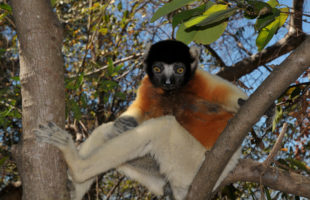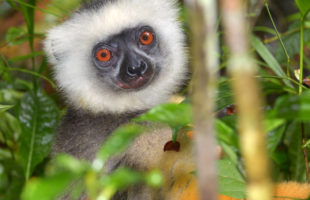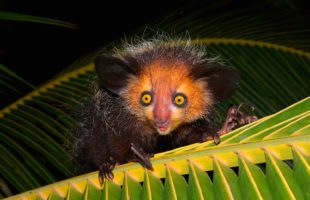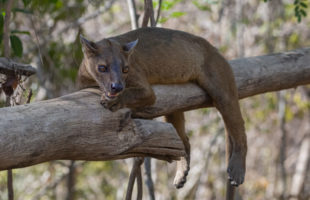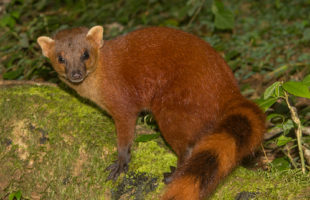In the northwest of Madagascar live lemurs, which occur quite frequently, but are nevertheless hardly researched: The Crowned Sifakas (Propithecus coronatus). Their habitat is limited by the two rivers Mahavavy in the southwest and Betsiboka in the northeast. Today, however, there are indications that the species is much more widespread and also populates areas around Tsiroanomandidy, Amboloando (south of Miandrivazo) …
LesenNo life without the Ocotillo: Verreaux’ Sifakas
The Verreaux’ Sifakas (Propithecus verreauxi) lives in the south of Madagascar and belongs to the few lemurs that successfully colonize the hot and hostile spiny forests. It is a very adaptable species that can survive even in very small forest areas. It can even be found in some lowland rainforests in the southeast of the eighth continent. In the northwest, the …
LesenA diadem of fur: Diademed Sifakas
The Diademed Sifaka (Propithecus diadema) is with a total length of 105 cm and a weight between five and seven kilograms one of the largest lemurs of Madagascar and because of its unusual fur colors also one of the most beautiful. His face is framed by long white fur, which looks a bit like a tiara and gave these lemurs …
LesenLemurs, the spirits of the forest
Lemurs are probably Madagascar’s most famous mammals – not for nothing because they originally exist only there and nowhere else in the world. They belong to the strepsirrhine primates and are divided into about 100 different species. The word lemures comes from Latin and refers to the spirits of the dead of ancient Rome, who have little resemblance to the …
LesenAn extraordinary predator: The Fossa
Indeed it looks a little strange: The Fossa (Cryptoprocta ferox). The long-stretched body wears a thick tail of almost equal length, and the cat-like head is graced by quite sharp teeth and a big, round nose. And although the Fossa grows only knee-high, it is Madagascar’s largest predator. Both genders reach a maximum body weight of 12 kg, the males …
LesenOther mammals in general
Originally, Madagascar has no big mammals like buffaloes, zebras, hippos, lions or other large animals you can meet all around Africa. Ruminants, which settle nearly all regions worldwide, lack in Madagascar completely. The now everywhere kept Zebus were introduced to the island as domestic cattle and don’t occur in the wild. The Indian Civet is another animal introduced by humans, …
Lesen MADAMAGAZINE Your Magazine about Madagascar
MADAMAGAZINE Your Magazine about Madagascar
